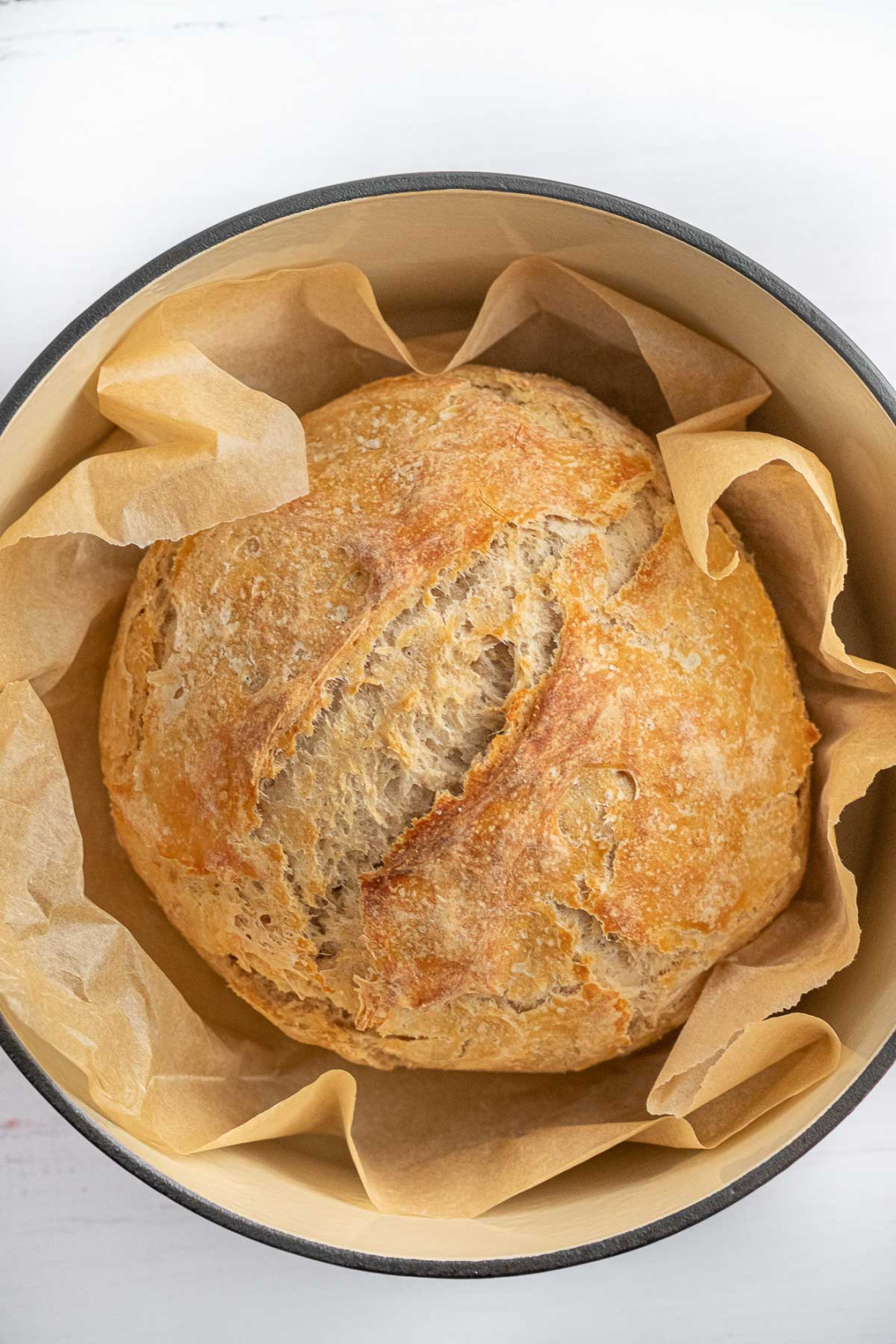Imagine a loaf of bread, golden-brown and crusty on the outside, soft and airy within. A symphony of flavors dances on your palate, a testament to the magic of fermentation. This is not your ordinary bread; it’s a sourdough sensation, crafted without a starter, a testament to the power of simplicity and the artistry of baking.
Ingredients:
500g strong white bread flour

Image Source: tosimplyinspire.com
Preparation Process:
1. The Floury Foundation: In a large bowl, combine the flour and salt. Create a well in the center and add the honey and yeast.
2. The Watery Waltz: Gradually pour the warm water into the well, mixing it with the dry ingredients until a dough forms.
3. The Kneading Ritual: Turn the dough onto a lightly floured surface and knead for 10-15 minutes, or until smooth and elastic.
4. The First Rise: Place the dough in a lightly oiled bowl, cover with a damp cloth, and let it rise in a warm place for 1-2 hours, or until doubled in size.
5. The Shaping Ceremony: Gently deflate the dough and shape it into your desired loaf. Place it in a floured baking tin or on a baking sheet lined with parchment paper.
6. The Second Rise: Cover the shaped dough and let it rise for another hour, or until it has almost doubled in size again.
7. The Baking Ballet: Preheat your oven to 220°C (425°F). Score the top of the dough with a sharp knife to create a decorative pattern.
8. The Golden Transformation: Bake the bread for 20-25 minutes, or until it is golden brown and sounds hollow when tapped.
9. The Cooling Ritual: Remove the bread from the oven and let it cool completely on a wire rack before slicing.
Total Time Required:
Approximately 3-4 hours, including rising and baking time.
Serving Ideas:
The Classic: Serve the sourdough bread with butter and a drizzle of honey.
A Cultural Fusion:
This sourdough recipe is a fusion of ancient techniques and modern convenience. Sourdough bread has been a staple in many cultures for centuries, providing a nutritious and delicious food source. By fermenting the dough, we harness the power of beneficial bacteria and yeast, which not only enhance the flavor but also improve the bread’s digestibility. This recipe pays homage to the bakers of the past, who, with their simple ingredients and time-honored methods, created a culinary masterpiece that continues to inspire and delight.
The aroma of freshly baked sourdough bread, the satisfying crunch of its crust, and the soft, airy crumb are a testament to the beauty of simplicity. It is a reminder that even the most complex flavors can be derived from the most basic ingredients. As we savor each bite, we connect with the rich history of breadmaking and the culinary traditions that have shaped our world.